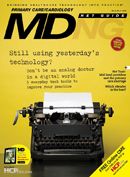Practice Management: Improving the Patient Experience at All Stages of the Visit
The key to better patient satisfaction is to pay close attention to the non-medical aspects of the care experience
The key to better patient satisfaction is to pay close attention to the non-medical aspects of the care experience.
Maximizing Patient Flow
The Medical Group Management Association issued a report (“Performance and Practices of Successful Medical Groups: 2010 Report Based on 2009 Data”) in January that dubbed a number of organizations “better-performing medical practices” based on their ability to thrive “in four performance management categories: profitability and cost management; productivity, capacity and staffing; accounts receivable and collections; and patient satisfaction” (http://HCP.LV/f6k6L7).
So what made these 500 “Better Performers” better performers?
• Better-performing practices not only benchmark patient satisfaction measures, but actively “educate physicians about behavior.”
• Information technology operating expenses are higher in better-performing practices, which “reported less bad debt to fee-for-service activity per full-time-equivalent (FTE) physician.”
• “Total operating costs as a percentage of total medical revenue” were lower and the number of “procedures per FTE physician” were higher in better-performing practices.
• A low “percentage of total accounts receivable in the 120-plus-day category” is the hallmark of a better-performing practice.
These pointers are all well and good, but how exactly are these reforms achieved? Largely it comes down to the patient experience. “Walk the walk of the patient from the front door to the checkout window,” said L. Gordon Moore, MD, president of Ideal Medical Practices, a consulting firm in Seattle, during a conversation with American Medical News (http://HCP.LV/fscqrE).
Making these simple changes, and realizing success from them, can help increase staff buy-in for more comprehensive procedural overhauls like the IT implementations that help the “better-performers” achieve such success.
When it Comes to Medical Malpractice, You Want to Mediate
A review of “thirty-one mediated malpractice lawsuits involving eleven nonprofit hospitals” published in the Journal of Health Politics, Policy and Law found that “mediation of medical malpractice lawsuits provides savings for the parties by shortening the litigation process.” Further, according to an analysis by Ann W. Latner, JD, in Renal and Urology News, mediation ensures that the outcome remains “under the parties’ control rather than at the whim of a judge or jury.” (http://HCP.LV/f7Mikp)
Unfortunately, such outcomes (only 16 cases were settled in mediation) are not the rule because of a lack of physician participation. This eliminates an “opportunity for the physician to provide closure for the plaintiff and to apologize for any medical error that occurred,” a shame in light of the fact that apologies often lead to an increase in the number of settlements and shorten time-to-settlement (http://HCP.LV/gU3S8P; http://HCP.LV/dPfhyN).
Even worse is the fact that a lack of participation decreases the likelihood that “mediated discussion of adverse events and medical errors can lead to improved quality of care.”
Changing this unfortunate reality, the authors write, “will require medical leaders, hospital administrators, and malpractice insurers to temper their suspicion of the tort system sufficiently to approach medical errors and adverse events as learning opportunities, and to retain lawyers who embrace mediation as an opportunity to solve problems, show compassion, and improve care.” http://HCP.LV/flHpvK
An EHR and Payment Card in One
Many practices are struggling to cut billing costs and improve collection rates (http://HCP.LV/gIYJfM); with the LifeNexus Personal Health Card they may be able to do both and improve tracking changes in patients’ personal information and health status. The Personal Health Card utilizes the encrypted and password-protected Individually Controlled Health Information Platform (iChip) to store a patient’s personal health record and allow access to “Health Savings Accounts, Flexible Spending Accounts and Health Reimbursement Arrangements.” The card can also “be offered by financial institutions with either prepaid, debit, or credit functionality.” http://HCP.LV/ep5tvx
